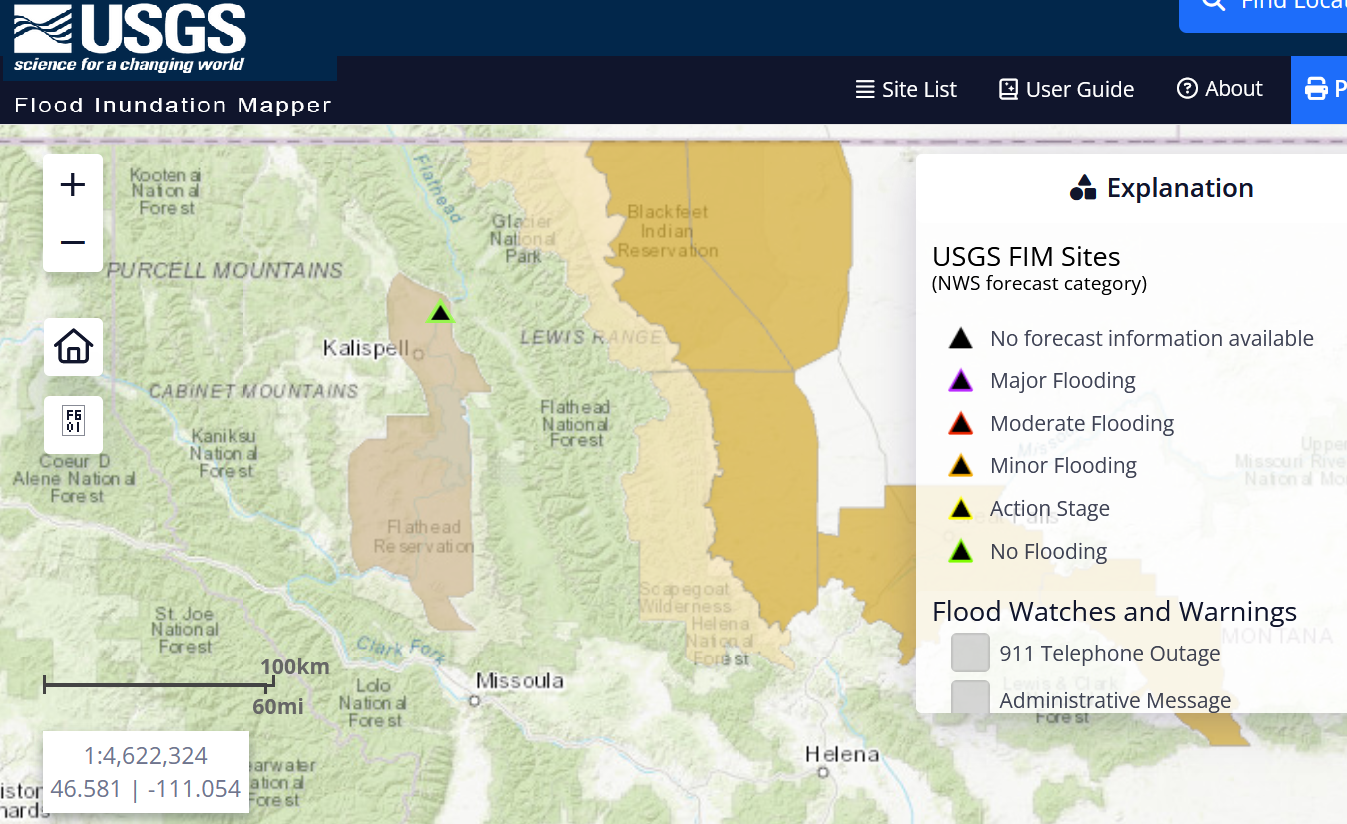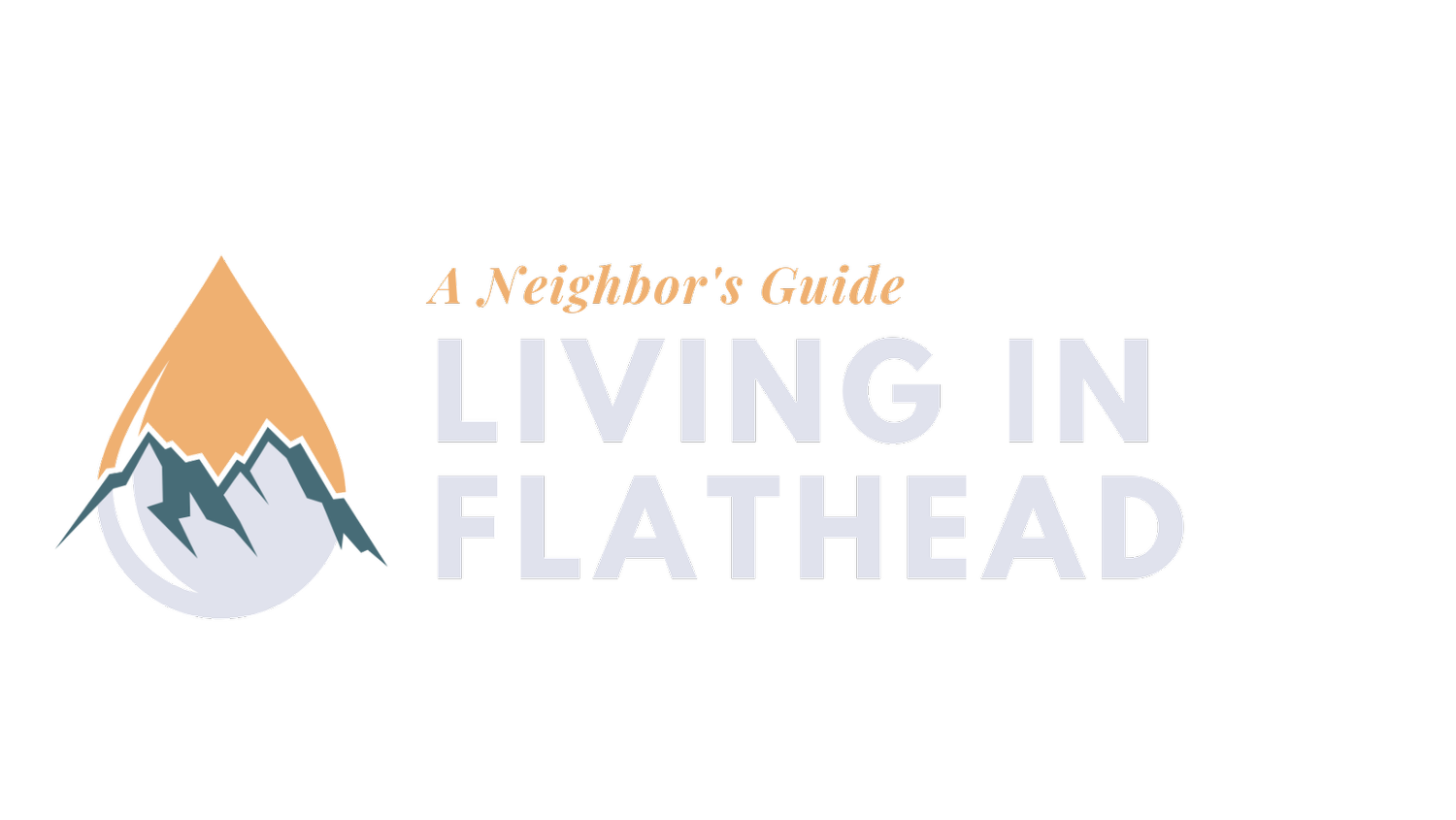
Climate and Health
Record-breaking heat waves and intense fire seasons are becoming more frequent in the Flathead.
Stay safe and healthy.
The Montana Climate Assessment indicates that we will continue to see temperatures rise, increased smoke from wildfires, and extreme climate events ranging from flood to drought. Impacts of heat, smoke, and extreme weather events will affect our health, especially for the most vulnerable individuals with existing chronic physical and mental health conditions, as well as the very young, very old, or pregnant women and their fetuses.
Check this Health Toolkit by Montana Health Care Professionals for a Healthy Climate to learn about Montana’s health and climate challenges and solutions.
Extreme Heat
Increased summer temperatures and periods of extreme heat, with many days over 90 degrees, will worsen heat-related health problems such as dehydration, heatstroke, and respiratory and cardiopulmonary illnesses. Warmer temperatures and longer growing seasons are also leading to increased pollen levels, worsening allergies and asthma.
Prepare and plan for safety by checking for heat warnings, extreme heat guidelines, and having a plan for cooling down during extremely hot days.
Heat and Weather Warnings
When and where are extremely hot days expected this month? How warm will it be, and where, over the next 3 months? How does heat affect human health?
Check heat forecast maps and information to stay safe and informed. Check temperatures.
Extreme Heat and Safety
What are the warning signs and symptoms of heat-related illness?
Check tips, information, and resources to help you and your pets stay safe in extreme summer heat.
Wildfire Smoke and Air Quality
Learning to live with wildfire has become a priority for Montanans. Smoke often fills the Flathead Valley from local wildfires, as well as those burning in neighboring states and Canada. Particulate matter from these fires traps heat, reduces visibility, and creates dangerous air quality conditions.
Wildfires are increasing in size, severity and frequency in the west, reducing air quality and resulting in more emergency room visits due to asthma, chronic obstructive pulmonary disease and cardiovascular conditions, including stroke, heart attack, and heart failure.
Learn how to protect yourself and your family.
-

Today's Air Quality
Check these maps for air quality, smoke, and fires.
Also check Today’s Air (updated regularly) and this Interactive Fire Map for more wildfire information.
-

-
Indoor Air Quality
Indoor air pollution can come from many sources.
Learn how to create healthy indoor air and protect your health by limiting exposure to harmful, smoky air.
-

Allergy Forecast
Rising pollen levels in the warmer seasons are worsening allergies and asthma. Prepare by checking both the current and forecasted pollen counts, and ways to manage your allergies.
Drought and Floods
The Flathead is experiencing more unexpected and extreme weather events, such as earlier and rapid spring snowmelt with flooding, severe drought, and more extreme storms. These extreme-weather events can endanger lives and lead to more gastrointestinal disease from contaminated water supplies, as well as increased opportunities for other water-borne, food-borne, and mold-related diseases.
Drought poses challenges to local agriculture, resulting in decreased food availability and nutritional quality, and to the safety and availability of public and private water supplies, especially for individuals and communities relying on surface water and shallow groundwater. Droughts, whether short or more prolonged, can have health impacts such as respiratory issues due to poor air quality from fires or dust storms, gastrointestinal illness due to declining drinking water quality and/or sanitation services, or increased vector-borne diseases as mosquitoes breed in stagnant waters.
-

What is your flood risk?
Stay tuned to your County’s flood alerts and information. Flathead - Floodplain safety and evacuation information.
-

How is drought affecting your neighborhood?
Check current drought conditions, outlooks, and long-term trends: Drought maps. Learn what you can do to protect your health and the environment during droughts.
-

Prepare for emergencies.
Find out what help your county can offer during and after an emergency.
Other health concerns:
Radon: Radon is a radioactive gas found throughout the US and in Montana. It is the second leading cause of lung cancer, after smoking, Most indoor radon comes from the soil or rock beneath a building, and it can be found in both new and old homes alike. Whether you are renting or buying a house, test for radon. Learn more about radon, testing, and mitigation at county-radon.info/MT/Flathead.html and mt.gov/energy/Programs/radon.
Mental Health: Heat and extreme weather events can lead to stress, anxiety, fatigue, brain-fog, and other mental health issues. For information and resources visit this Flathead County Mental Health Resource Guide.
Environmental Health
Have other concerns or questions? Check the county’s environmental health program and information they have about testing, monitoring, and programs that address sewage and groundwater, air quality and burning, Covid-19 and flu shots, Mpox, mosquito born diseases, and more.
Flathead County Health Department, 1035 1st Avenue West, Kalispell, (406) 751-8101
Flathead County Sheriff Department, 920 South Main Street, Suite 100, Kalispell, (406) 758-5585



